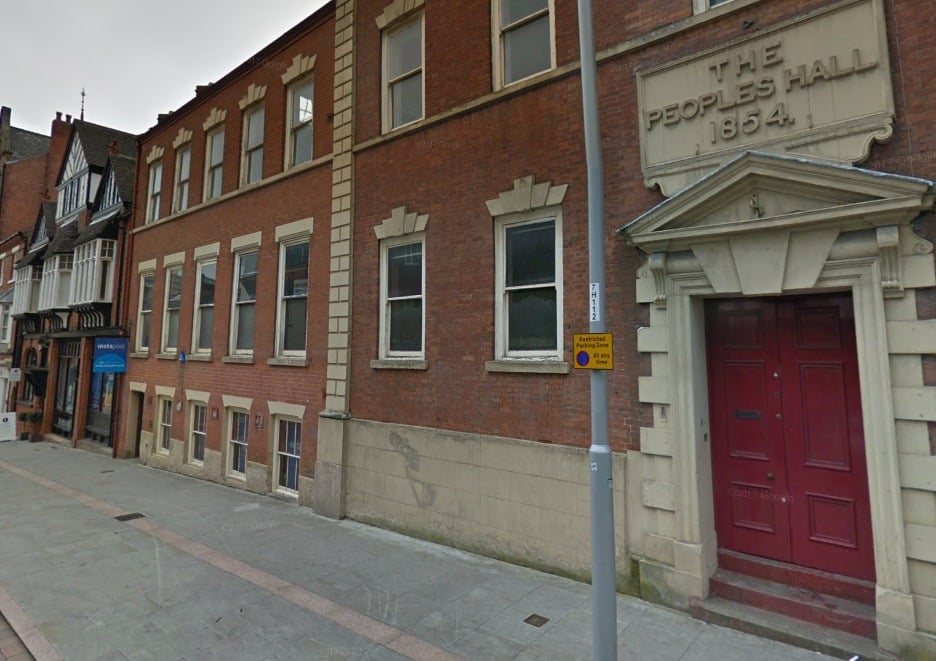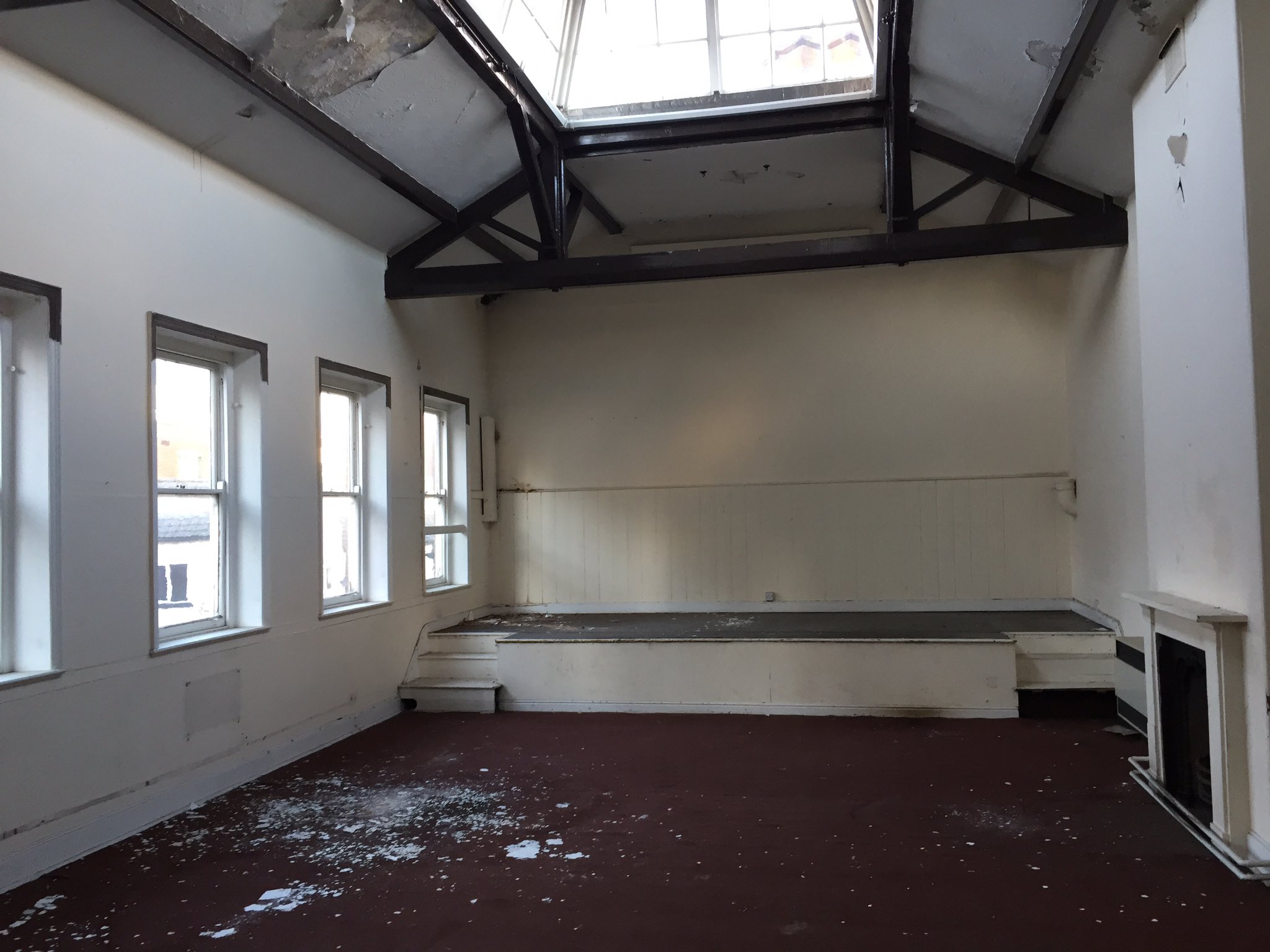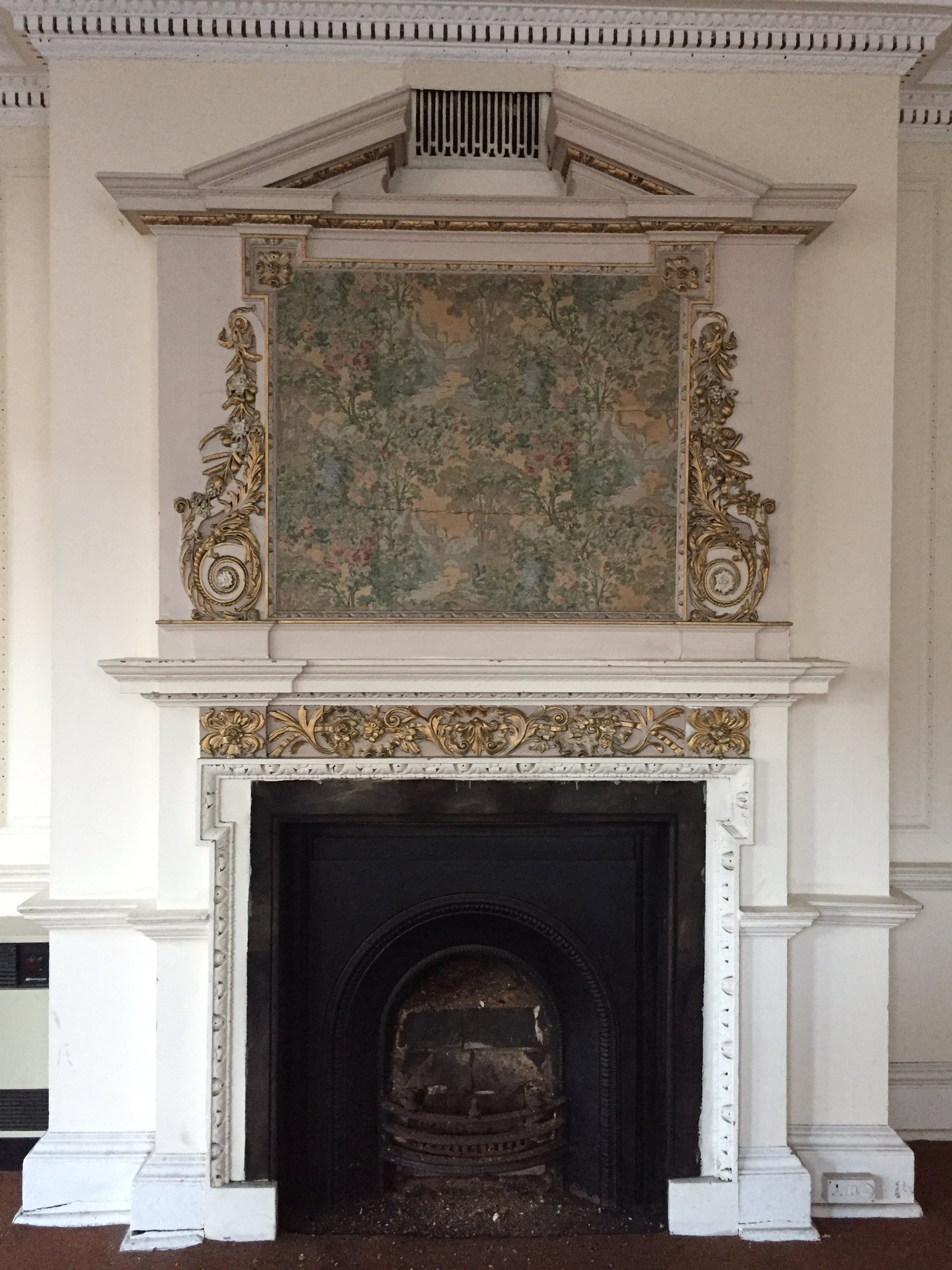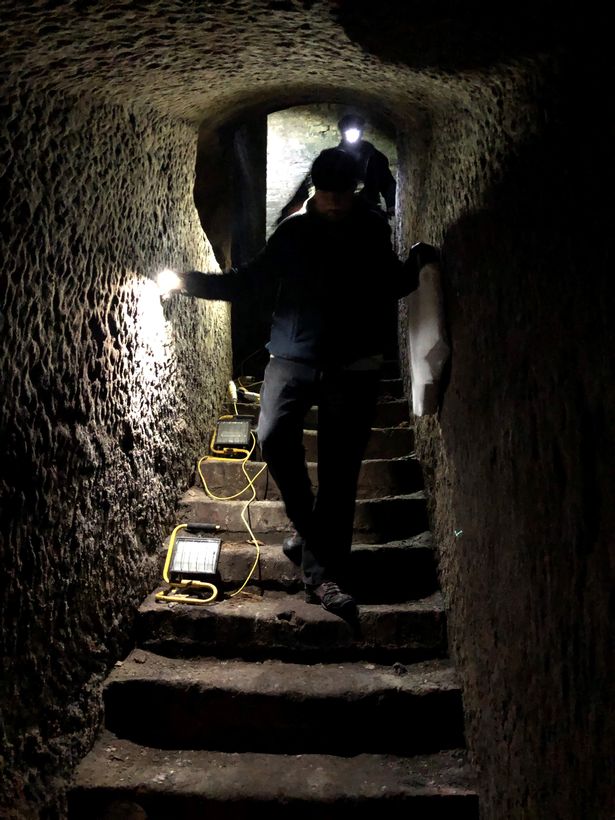Introduction
In this installment of our series, where we look at famous Nottingham buildings, we will be taking a look at ‘The Peoples Hall’. The People’s Hall can be found at 18 Heathcoat Street (formerly Beck Lane) in Nottingham City Centre. It was originally known as Morley House and was built in 1750 for Ann Morley.

Origins
Ann and Charles Morley were wealthy salt earthenware manufacturers, with a pottery close by, on Beck Street, their high glazed pots are much sought after by collectors nowadays, with examples in the Castle Museum.
Ann’s husband, Charles, died at the young age of 39 was described as “an opulent potter in this town.” Building such a large, iconic house was surely the widowed Ann’s way of making a statement – she was an independent, strong, and successful businesswoman, something quite unusual for a woman at that period.
Features
Architectural historians have described the exterior of the grade || listed building as “austere”, which reflects the air of mystery about the building, which is tinged with faded glory, as if it had slept for 200 years.
The property is made up of two buildings, an 18th century townhouse and a 19th century public hall.
It sits over three floors, with a basement, cellars and subterranean caves. Many of the building’s original features still remain, but are in poor condition.
The red brick building has become an iconic feature of the area and really stands out amidst Heathcote Street's range of quirky buildings – It is thought that the bricks used to build the house may even have come from Ann’s own brickworks.

The staircase
The People's Hall was originally a mansion house, and its magnificent staircase is considered one of the most beautiful in Nottingham, with its Cuban mahogany handrail, which features three balusters to each tread – a hallmark of quality.
The staircase was converted and altered in 1854 for George Gill, founder of People's College.

The cellar
Steps in the cellar descend fairly deep underground, where you arrive in a large triple chambered cave system. It is still possible to see the marks of the workman’s tools in the sandstone, as if they had only recently left. What went on there may be revealed by a dig, but it is possible that one would have been used for malting barley. Home brewed beer was a staple when 18th century well water, especially in towns, was often polluted.

History
In 1843, The Nottingham School of Design, later to become Nottingham Trent University, first opened here to educate workers in the lace and textile industry and, in 1854, lace merchant George Gill established the People’s Hall Institute – a ‘working-man’s hall’. It was at this point when the building was almost doubled in size and re-fronted."
During the 20th century the building was used for a variety of different purposes, including as a rehearsal hall for The Cameo Players, a local amateur dramatic group; a meeting place for the Antediluvian Order of the Buffalo; and, since the Second World War, a venue for sporting competitions including snooker and billiards.
Now
In June 2019, it was announced that the building would be revamped, thanks to a £1.5m grant from the National Lottery Heritage Fund.
Councillor Linda Woodings, portfolio holder for planning, housing and heritage at Nottingham City Council, said: “We’re really proud of Nottingham’s heritage and have been working in partnership with local businesses and organisations for a number of years, to put plans in place to secure funding to help restore, preserve and bring back into use important historic buildings like The Peoples Hall.










